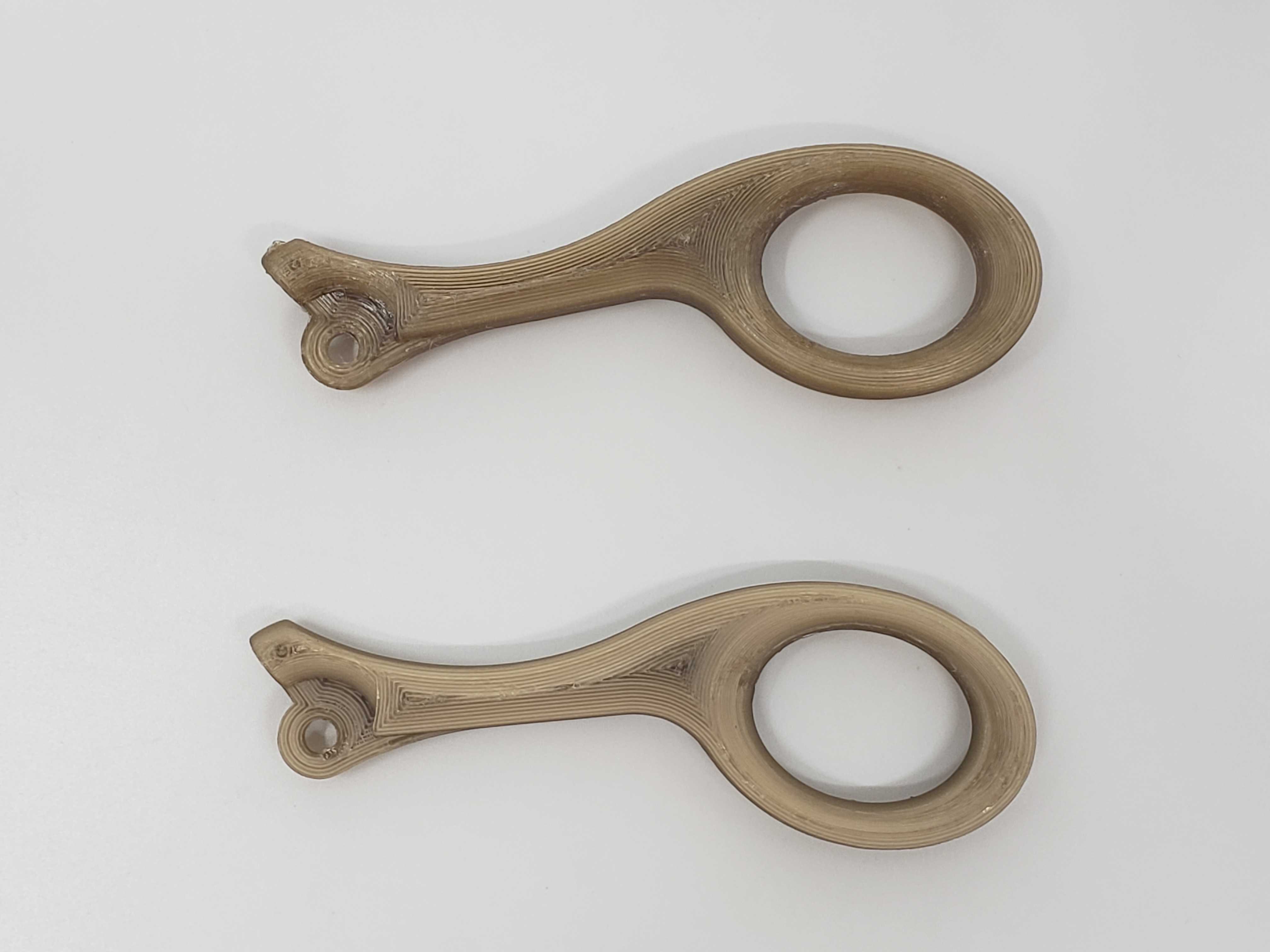AON3D Readyprint™ PPSU
AON3D Readyprint™ PPSU (Polyphenilsulfone) resin is an amorphous thermoplastic of the polysulfone family. PPSU is a material with a high glass transition temperature, low humidity absorption, and has great chemical and thermal resistance. PPSU is used primarily for its high-temperature stability and resistance to steam sterilization treatment for medical equipment. In addtion, PPSU is used in low-volume injection molding, automotive spare parts, chemical treatment, oil and gas. It has the following certifications:
- Flame retardant – eligible to UL94 V0
- Aerospace FAR 25.853 Standard
- Food contact under EU 10/2011
- Complies with the RoHS and REACH standard
Printing Difficulty: Expert
Readyprint™ PPSU can be purchased from AON3D directly by contacting help@aon3d.com.
- Moisture Control
- Build Platform Adhesion
- General Process Settings
- Post-Processing
- Troubleshooting & Best Practice
Moisture Control
Readyprint™ PPSU is factory pre-dried and should be installed in the Filament Dry Storage and Feed System prior to printing to prevent moisture uptake and minimize the impact of moisture on the printing process. PPSU is highly susceptible to hydration. Bubbles, popping noises, excessive oozing, rough texture, and stringing may occur if it has been hydrated.
Dry filament at 120ºC for 4-6 hours in a convection oven. Ensure drying equipment respects our site requirements to ensure adequate drying performance is achieved. Store filament in air-tight bags or containers alongside silica or zeolite desiccant. Be sure to replace desiccant regularly as its moisture capture ability is exhausted. Our Filament Dry Storage and Feed System prevents filament moisture uptake minimizing the impact of moisture on the printing process.
For more information, see the Filament Drying and Moisture Control page.
Build Platform Adhesion
For instructions on how to inspect the AON3D build plates, refer to the Clean Build Platform and Build Chamber procedure for AON M2+ or the Inspect and Clean Build Plates procedure for AON-M2 and AON-M2 2020.
PEI Build Sheet
PPSU prints well on PEI film build sheet with Nano Polymer Adhesive as it exhibits great adhesion behavior. Printing at high bed temperature (180°C) and/or extrusion temperature (~400°C) can lead to complete welding of PPSU to the PEI build sheet. It is recommended to use Nano Polymer Adhesive to act as a release agent and prevent permanent welding of parts to the build surface. The PEI film is sensitive to Z offset calibration and thermal stability of the printer system. For best results, ensure that the machine has reached thermal equilibrium before calibrating. If the bed-to-nozzle distance is too small, or the first layer is too hot, the part may be difficult to remove without damaging the part and/or build sheet.
General Process Settings
For best results, process settings should be adjusted based on a particular model geometry. If you require process development support, our Applications Engineering team can help! Send us a message at help@aon3d.com to consult with one of our Additive Manufacturing Specialists.
| Setting | AON M2+ |
|---|---|
| Extrusion Temperature | 360-420ºC |
| Bed Temperature | 160-200ºC |
| Chamber Temperature | 135ºC |
| Print Speed | 10-60 mm/s |
| Nozzle Size | 0.25-1.20 mm |
| Preferred Build Platform | PEI Build Sheet |
Dual Extrusion and Support
Dual Extrusion Profiles for Readyprint™ PPSU coming soon. For more information, see the Using Supports and Support Materials and Dual Extrusion pages.
Sample Slicer Profiles
SuperSlicer
All AON3D-validated materials are available in the SuperSlicer configuration bundle. Refer to SuperSlicer Installation and Update to install and update the SuperSlicer software. Follow the instructions to update to the latest version to ensure you have access to all available materials.
Simplify3D®
Simplify3D® sample profiles for Readyprint™ PPSU are available in the Downloadable Assets section.
Post-Processing
Allow all machine components to reach room temperature before proceeding further. Failure to allow components to cool down will result in thermal injury (burns) to personnel.
Troubleshooting & Best Practice
High-Speed Printing
PPSU is not well suited for high-speed printing. It can result in melt fracture and poor interlayer adhesion. AON3D Readyprint™ PPSU can be printed at tool speeds of up to 60 mm/s.
Key best practices to consider when selecting higher print speeds:
- Print speed above 50 mm/s induces significant stress in the deposited material, leading to increased risk of warping and shrinkage under high-temperature service.
- Sharp corners, small holes, and other surface details begin to lose dimensional accuracy and resolution beyond 60 mm/s.
- Increased layer height is an effective alternative to high tool speeds to minimize print times while reducing overheating, residual stress, and underextrusion issues.
- Increased extrusion width or larger nozzle size selection are also effective means to reduce print time.
- At high deposition rates (elevated tool speed, layer height, or nozzle size), an increased extrusion temperature is also required to ensure consistent flow and adhesion of extruded material.
Rough Surface and Excessive Stringing
When hydrated, PPSU printing produces a rough surface with excessive oozing, much like in the picture below.

Follow the drying procedure in the above Moisture Control section.
For more information, see the Filament Drying and Moisture Control page.